Caracal is a name that most reading this blog will associate with their Enhanced F handgun, something RF lusted after harder than Israeli supermodels. After swinging for the fences with their first release and coming up short, they’ve switched gears and have started producing a more “traditional” line of firearms. Their latest release is the VERSUS Competition Rifle.
Back at SHOT Show 2017 Caracal unveiled their new line of AR-15 pattern rifles, specifically a pair of 16-inch guns that are about as groundbreaking and innovative as your grandmother’s “secret” chocolate chip cookie recipe (the one that’s actually just the recipe on the back of the Toll House chocolate chip bag).
The only thing that was really different about the guns was a custom-designed lower receiver with some ergonomic enhancements Everything else about the rifles were things we’ve seen hundreds of times from every manufacturer under the sun. The VERSUS Competition Rifle seems to be in that same vein; a good competition rifle that takes no chances and also makes no mistakes.
Starting out at the business end of the 18-inch barrel, Caracal ships the rifle with a two-chamber muzzle brake that fits within the size restrictions for 3-gun competitions. I couldn’t find any additional information on it beyond it being a “self timing muzzle brake.” It looks fine and it works well.
Speaking of that 18-inch barrel, Caracal has selected Proof Research as their barrel supplier. Proof makes some great products, using carbon fiber-wrapped barrels to cut down on weight while maintaining accuracy and performance. I’m a huge fan of theirs for bolt-action precision rifles, but when it comes to 3-gun setups I usually prefer an all-metal barrel.
Excessively high round counts can have a tendency to degrade the carbon fiber material and cause it to de-laminate, and while you probably won’t run into 500+ round-per-day competitions, I’m still one to err on the side of caution. Then again, plenty of top competition shooters use them for 3-gun rifles so it might be less of an issue than I’m anticipating.
The barrel has a .223 Wylde chamber which is capable of safely chambering both .223 Remington and 5.56 NATO ammunition. What that means to the average shooter is that the rifle will be able to chamber ammunition with heavier projectiles without any problems, since the 5.56 NATO specification usually has a shorter throat length and can sometimes cause issues with (slightly longer) heavier ammo.
The barrel sports a 1:8 twist to the rifling which is an acceptable intermediate step that will adequately stabilize both heavy and light projectiles, but won’t really be great at either. Just like the rest of the rifle it’s a middle-of-the-road approach that will ensure it works well enough to pass muster, but will never be truly “great” at anything.
Covering the barrel is a 15-inch long free-floating handguard manufactured by Caracal themselves. The rail has plenty of slots built in to allow proper ventilation and should keep the heat from the barrel from warping the carbon fiber. That’s a plus.
The handguard sports plenty of slots for M-LOK-capable attachments. In fact, pretty much the entire top of the rail has been replaced with M-LOK slots instead of the more traditional full length Picatinny rail. This is one of the few changes from the “one standard unit of AR-15” design that Caracal seems to have been following and I really like it.
There’s a bit of Pic rail at the near end just in case you scope mount needs it, and there’s a small patch at the end for your backup iron sights, but otherwise the rail is slim and smooth.
Another thing to like is the way it attaches to the upper receiver. Instead of being friction-tight and timed on to the barrel nut the handguard actually has a slot that slides into in the top rail to keep it from moving and a screw to secure it in place. That should make removing the handguard for servicing much easier and keep it from shifting around even under extreme stress. Nicely done, Caracal.
The receiver set is another place where Caracal has made some changes for the better. The upper receiver is unremarkable with the exception of the matching cut-out for the handguard, but the lower receiver has some nifty additions.
On each side of the receiver there’s a cutout and a small ledge right where your trigger finger should index along the side of the gun. That’s a nice little ergonomic touch that I haven’t seen since Franklin Armory did it a few years back. The front of the magazine well also has some ridges to help you grip the gun or keep it steady if you brace it against a fence post, whatever the situation calls for. It’s not much, but it works.
The safety selector is a little…strange. If you look closely you’ll notice that there’s a little ledge at the 6 o’clock position sticking up out of the metal, which will prevent the safety selector from moving past the 90 degree mark.
I get why they did that. It’s the same reason for the “high shelf” design…to keep people from easily modifying the rifle into a machine gun by dropping in a full auto fire control group. I’m just not sure it’s a good idea. With the increased popularity of binary triggers, Caracal is limiting their customers’ ability to legally modify their own firearms.
Speaking of triggers, Caracal went with the Geissele Super 3-Gun trigger in their build. I reviewed it back when it came out in 2012 and my opinion hasn’t changed: it’s an excellent niche trigger that’s done very well. The break in the trigger is so light as to be almost indiscernible, which can lead to more than one round being sent down range unintentionally. That might be fine for 3-gun competitions (except when it’s a Limited Vickers stage) but it could be an issue in personal defense applications or other uses.
Other differences: Caracal added a unique pistol grip that feels pretty good, and a slender shoulder stock that works just fine.
Rounding out the changes to the standard lower receiver, Caracal has added an extended magazine release to their rifle. I’ve had one of these on my rifle since they came out around 2014 and I’m a fan. They make the magazine release much easier to press and they even look pretty cool when you have them painted a contrasting color.
Out on the range the rifle works exactly as expected — a solid, reliable platform that feels like it was built to last. There’s no wiggling or rattling of parts, just a solid firearm with a fairly light recoil. The two-chamber muzzle brake does a damn fine job of taming the raging beast that is the punishing recoil of a .223 Remington cartridge.
I fully admit that I lost the picture I took of the test target, that’s on me. But using Eagle Eye Ammunition I was able to get a relatively nice 1.1 MoA grouping. Normally I have a hard and fast rule about rifles needing to be accurate to at least 1 MoA if they want to demand over $1,000 but I’m so badly out of practice that I’m willing to give Caracal the benefit of a doubt that it’s me in this case, and not the gun.
Caracal has made a fine rifle. It works, it’s reasonably accurate, and I didn’t have a single issue with its reliability. But that’s the problem. In a crowded market like the one this competes in, simply having a good competition rifle isn’t good enough to command a high price tag. Other companies have figured this issue out, from Cobalt Kinetics’ unique magazine release system to FN USA’s unique color scheme on their competition guns, you need something to separate yourself from the rest of the pack.
For $500 less you could have the STA-15 Apex HD that has most of the same bells and whistles. Two hundred dollars less gets you the Armalite 3-gun rifle that I reviewed and really liked (a full five star review). Or $200 more used to get you the Colt Competition AR-15 that had a lot of cool features that made it well worth the price…until Colt Competition went under.
The problem with the Caracal isn’t that there’s something wrong with it, but instead that there’s nothing really to write home about. When they first came out with their unique handgun and 9mm carbine I had high hopes that they would inject some new, innovative designs into the firearms marketplace. Instead they played it safe and produced the same thing that countless other manufacturers are making.
Sure there are minor differences on the VERSUS Competition Rifle and they made their own handguard, but none of that is really enough to turn heads these days.
If you the VERSUS and want one, there’s no reason not to buy one. But if you’re just looking for a good competition rifle, there are plenty of other options that are either less expensive or have unique features that might suit you better.
Specifications: Caracal VERSUS Competition Rifle
Caliber: .223 Wylde
Overall Length: 34.7″ to 38″
Weight: 6.2 lbs
Barrel Length: 18 inches
Twist Rate: 1:8
Capacity: 30 rounds (magazine included, conditions apply for CA / MA / NY / ETC)
MSRP: $1,799
RATINGS (out of five stars):
Reliability * * * * *
Zero malfunctions. Didn’t even add any lube and it worked just fine.
Accuracy * * * *
I’m happy that it meets the 1 MoA requirement, but it wasn’t the most accurate gun I’ve ever shot.
Ergonomics * * * * *
The stock feels good, the handguard is slim and lightweight, and the pistol grip is comfortable. I mean, it’s an AR-15, how badly could you screw that up?
Overall * * * 1/2
There’s really nothing here to get me excited beyond the Caracal rollmark. It’s fine, it works well, but it’s the very definition of a middle-of-the-road competition rifle.


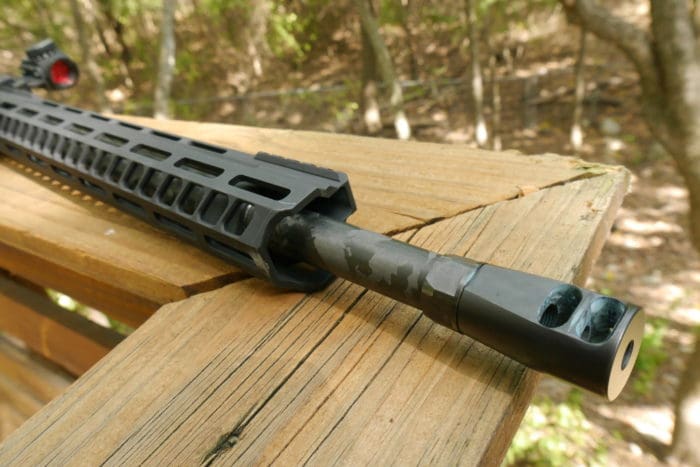
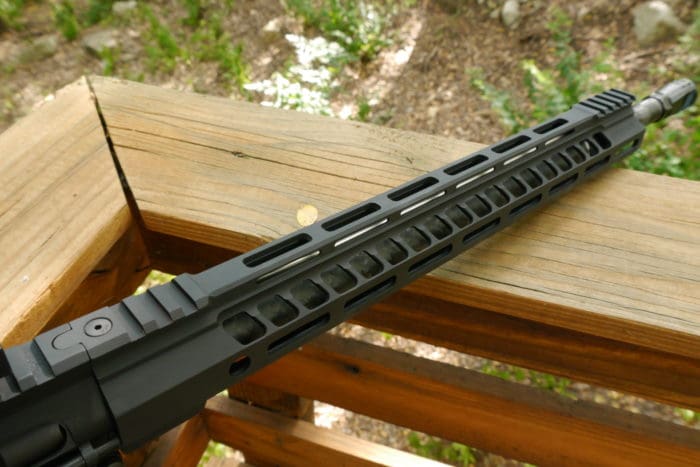
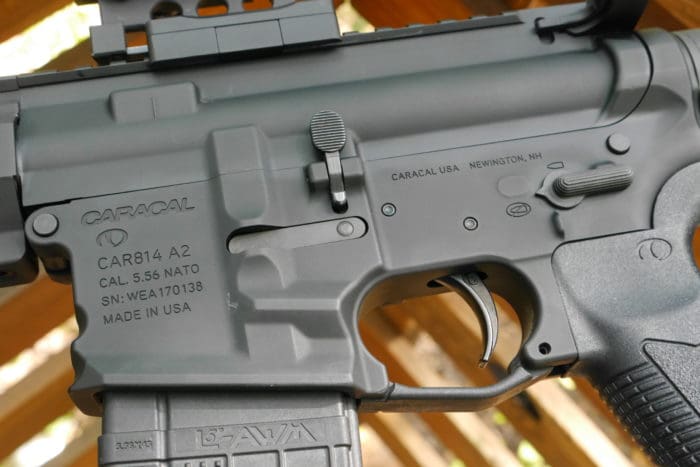
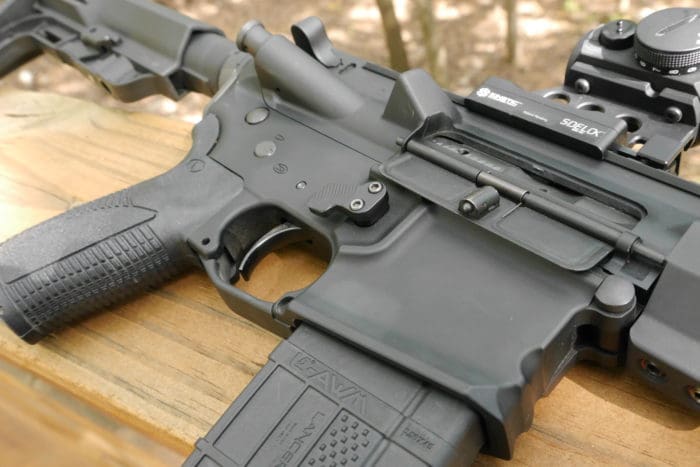
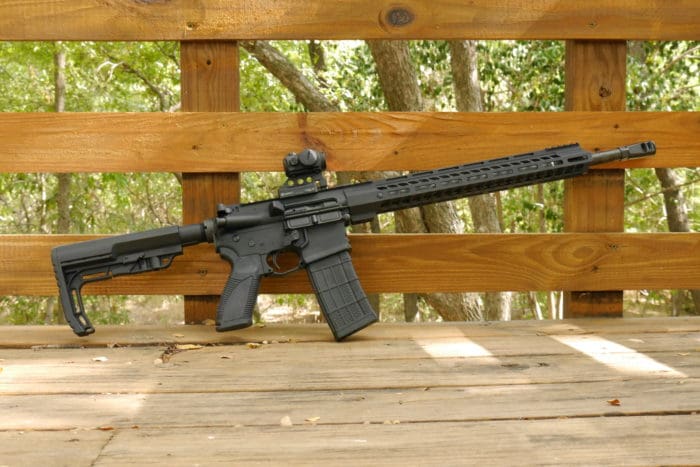



Ok, who REALLY wrote this?
Last I heard Nick Leghorn’s private plane went down somewhere over the Himalayas. He was last seen teaching transition drills to his army of Yetis and is rumored to run an Mk262 smuggling route into Kun’Lun.
They prefer the more culturally sensitive term “Sasquatch”. The word “Yeti” is less inclusive of the differently colored ones.
Clever ploy. That’s exactly like something the real Foghorn would say.
Good to see you hangin’ out in these parts again Foghorn.
“I mean, it’s an AR-15, how badly could you screw that up?”
You do realize some people *cough Jesse James cough* take words like those as a challenge…
For some reason I thought these were piston driven…
Agreed, nothing mind blowing, but the Proof barrel basically explains the difference in price between it and the Armalite, for example.
Nice to see Nick back, even if it is rare. What’s next? Robert doing a review like he said he might do?
I agree, its great to see him back here and I miss RF. JWT is the only person who keeps me coming back here. I mean no offense to the current crop of writers at all, but they just don’t really do it for me like the old crew did.
Thanks. Logan Matesh, Foghorn, and Joe Grine were the best writers this site has seen. Would love to see more of them all.
+1, Nick and JWT write gun reviews I would take to the bank. (cheers guys, I see that you’re here.)
But does it fire when dropped? I think that’s a feature of all Caracals.
For the second time today: Ba dum tiss.
Leghorn lives???!!! There’s a reason this blog was awesome. Israeli models, Caracal handgun lust, and a Foghorn gun lover were among those things.
Israeli Supermodels? I call BS.
Pics or they don’t exist.
Oh, there were pics. Many pics, too many pics for some.
Oh, the Israeli super models, good old times…
Nice to see you writing again, Nick.
网课代修 047
If you love to wear vests? so get this amazing Red Puffer Vest which is a favorite of all girls and it is the most-rated and most selling outfit in our store, shop now because the stock is limited.
Comments are closed.